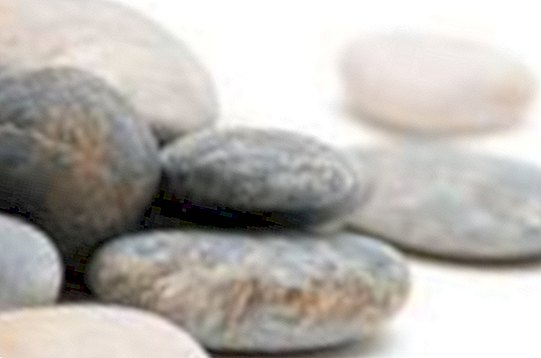What you need to know about gallstones

Often they are only discovered by accident, during an ultrasound examination. They are not that rare. Especially women over 40 have gallstones. In general, the risk for women is significantly higher than for men. Anyone who has children and is overweight is particularly prone to gallstones. They form when the mixture of solid and liquid components is no longer correct in the bile. Diabetes, high blood lipid levels and the use of hormones during menopause favor this process. The most common are cholesterol stones, which are caused by too much cholesterol in the bile.
Almost a quarter of all women around the age of 50 have gallstones - even if they do not realize it. Three out of four sufferers have no complaints. And at first the stones are not dangerous either, an operation is not necessary. Only when the stones cause inflammation, with pain in the right upper abdomen and fever, the gallbladder must be removed.
This happens by default minimally invasive today. The surgical instruments are introduced through several small incisions in the navel and in the abdominal wall (laparoscopic method). Complications that require relocation to open surgery with a larger abdominal incision during surgery are rare. As a rule, only a few small scars remain. And no one has to worry about severe impairments in daily life: Only very fatty food can temporarily cause bloating, flatulence or diarrhea, because the greater amount of bile required for fat digestion is missing. The reason: without a gallbladder, bile can no longer accumulate; it flows continuously into the intestine.
Operation over the navel with gallstones
Even better cosmetic results than standard surgery are expected to bring new methods that surgeons have recently been testing. In the so-called SILS or LESS method, all instruments are introduced via a single access in the navel. "This has advantages because there is only one scar", says the Ravensburg abdominal surgeon Professor Ekkehard Jehle. "However, the surgery can not always be completed in this way, and sometimes additional small incisions may be needed as with conventional surgery."
The surgeon is much more skeptical about the so-called NOTES method, in which the gallbladder is removed through the vagina or the stomach. There are no outer scars. Nevertheless, Ekkehard Jehle finds these access routes problematic. "If you operate through the stomach, the closure of the hole in the stomach wall is not easy, because, for example, a dangerous peritonitis," said the surgeon. "And from the vagina, the way to bile is longer than the navel, so there's a risk of hurting the gut on the way."
Professor Michael Butters from Klinikum Bietigheim sees this completely differently. He is one of the few surgeons in Germany to remove the gallbladder through the vagina and has performed this procedure about 120 times. "It works very well, the women have less pain afterwards, you do not see any scars, and the wound heals faster than a belly cut." The complication rate is low, as a first report of the German Society of General and Visceral Surgery has shown about 470 operations.
It is dangerous when the stones go on a walk. If they are trapped in the bile duct, which leads into the intestine, it comes to the dreaded biliary colic. In doing so, the gait contractively contracts to convey the stuck stone. The pain is almost unbearable and can radiate into the right shoulder or in the back.
Frequently, the colic caused by a fatty food, because the gallbladder then gives off a lot of bile in the passage and the stone swims with it. The stuck stone is usually clearly visible in the ultrasound.
If this is not possible, specialists can diagnose it with the help of a special X-ray examination (ERCP), in which - as with gastroscopy - a tube is pushed from the duodenum into the mouth of the bile duct and a contrast agent is injected. Often the bile duct stone can be grasped at the same time with a small basket and bring out. A few weeks later, however, the gallbladder should also be removed surgically in order to prevent the formation of new stones and thus possible further painful colic.
Prevention of Galleinsteine
- Avoid overweight
- Eat lots of fiber and low fat
- Do not make radical diets, lose a maximum of one kilo a week
- Have diabetes adjusted well
- Hormones during menopause take as short as possible
- Be physically active for half an hour at least five days a week
When the gallbladder needs to be removed
- Looking for an experienced surgeon when there is no emergency
- Especially with the new methods ask how many of these interventions a surgeon has already made
- Contact the German Society for General and Visceral Surgery (www.dgav.de), which has set up a NOTES registry, to inquire about suitable clinics










